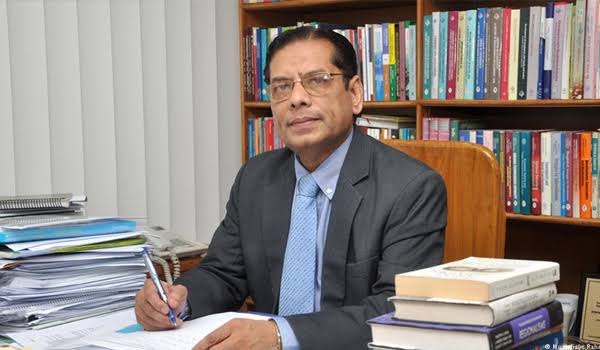Mostafizur Rahman
Published:2025-06-03 15:06:12 BdST
Inequality reduction elusive in FY 2025–26 budget
The proposed budget for FY 2025–26 must be evaluated against the backdrop of the exceptional circumstances under which it has been formulated. As a budget presented during the tenure of a transitional government, its guiding philosophy was expected to reflect the aspirations of student and public movements demanding equity—promoting an inclusive economy and a welfare-oriented state.
In that context, the true measure of this budget lies in how its proposed tax structure, expenditure allocation, and development priorities contribute to equitable distribution and investment revival.
While the macroeconomy shows signs of stabilization, the real question is whether this budget can effectively control inflation, revitalize investment, and accelerate employment generation.
Though the FY 2025–26 budget includes several proposals aimed at promoting public welfare and business-friendly policies, it falls short of breaking new ground when judged by the current economic needs—particularly in ensuring equitable distribution and sparking investment momentum.
Over the past two years, average inflation has remained high, pushing the prices of essentials up by more than 20%. Despite this, the tax-free income threshold remains unchanged for FY 2025–26, and will be increased by only BDT 25,000 in FYs 2026–27 and 2027–28. Compared to declining purchasing power, the current tax structure will place additional pressure on lower-middle-income groups.
Moreover, the removal of the 5% tax slab will further reduce the purchasing power of lower- and middle-income families—especially as wages are not rising in step with inflation. For individuals earning BDT 600,000 or BDT 1,000,000 annually, the proposed tax changes will increase their tax burden by 12.5% and 16.7%, respectively.
On the positive side, tax-free thresholds have been increased for certain vulnerable groups. The top income tax rate has been revised back to the pre-COVID level of 30%, effective from FY 2025–26, which is justifiable from an income redistribution perspective—although this is not a new policy.
However, the budget lacks bold proposals such as a wealth tax or inheritance tax—reforms that would have marked a real shift toward progressive taxation.
IMF pressure to implement a unified 15% VAT rate is visible in the budget. VAT has been increased on several items, including a jump from 5% to 15% VAT on online business commissions, and VAT on the production of household goods has been raised to 15%.
These increases will inevitably burden consumers. Although import duties have been reduced on some products to rationalize indirect taxation and reduce anti-export bias, the overall VAT policy remains regressive.
In the face of a weak tax administration, reliance on advance income tax (AIT) and advance VAT has grown significantly in recent years—a trend that continues in the FY 2025–26 budget. AIT of 2% has been newly imposed on many products. For commercial importers, advance tax has been raised from 5% to 7.5%, though it is said to be treated as final settlement. In practice, however, coordinating AIT with actual tax payments is often complex and time-consuming. While some forms of advance VAT have now been declared final and others allowed extended adjustment periods, many traders treat AIT as a cost and pass it on to consumers—violating the fundamental principles of income tax policy.
It is important to remember that not all VAT collected at various points enters the government’s treasury. It remains unclear whether the plan to install 300,000 Electronic Fiscal Devices (EFDs) has been scrapped. Rather than transforming realities, the budget seems more inclined to conform to them.
The budget does marginally expand the scope and disbursement of social protection, but the increase in allowances is underwhelming when adjusted for inflation and declining purchasing power.
If Bangladesh wants to maintain its tax-to-GDP ratio at 8–9% and keep deficit financing (largely debt-based) within 3–4% of GDP, then total government expenditure cannot exceed 12–13% of GDP.
This is one of the lowest ratios among developing and least-developed countries. In comparison, India and Nepal exceed 24%. Therefore, expecting transformative structural changes from a budget with such limited fiscal space is unrealistic.
Regrettably, the FY 2025–26 budget fails to provide a pathway out of this long-standing vicious cycle.
The writer is a Honorary Fellow, Centre for Policy Dialogue (CPD)
Unauthorized use or reproduction of The Finance Today content for commercial purposes is strictly prohibited.


